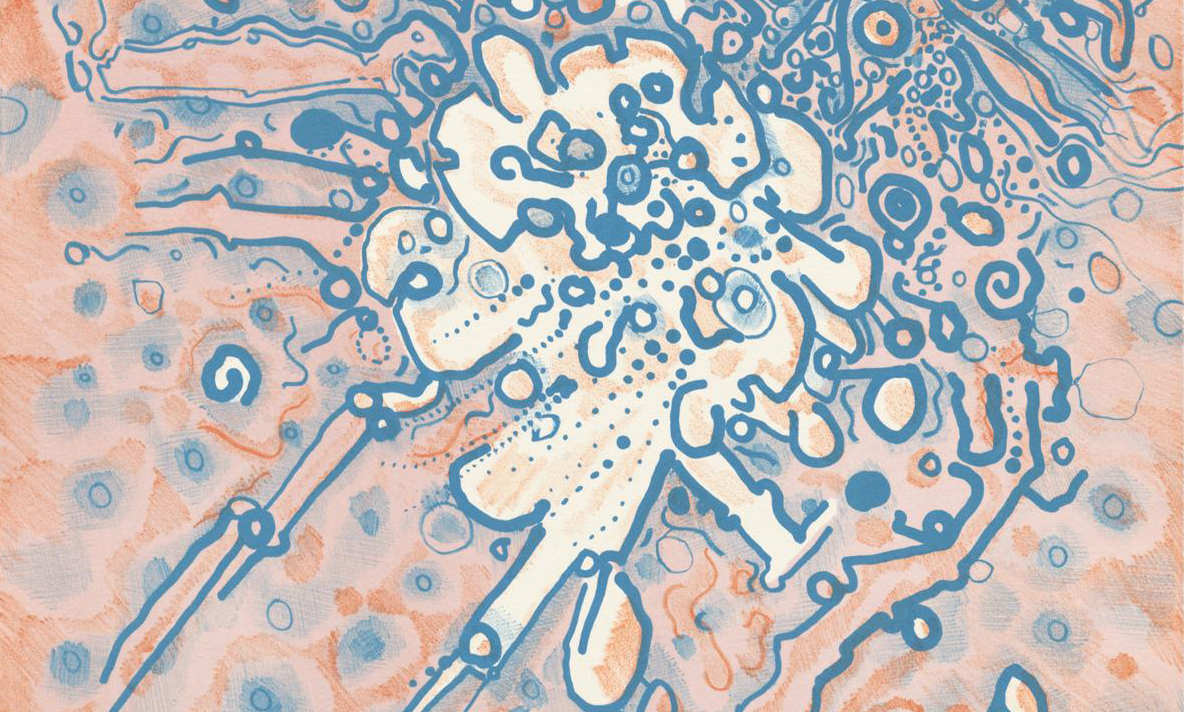
Lee Mullican, Untitled from Hungry Ghosts ⏤ detail, 1964
Lee Mullican
b. 1919 in Chickasha, OK, USA
d. 1998 in Santa Monica, CA, USA
d. 1998 in Santa Monica, CA, USA
Lee Mullican’s artistic practice was defined by an ongoing dialogue between tradition and innovation, the mystical and the scientific, the ancient and the modern. Rooted in Surrealist automatism, his work synthesized diverse influences, from indigenous art and Zen Buddhism to quantum theory and cartography. Mullican developed a signature technique using a palette knife to create intricate, rhythmic fields of color, evoking cosmic landscapes and spiritual dimensions. Constantly exploring new ways of making, his practice evolved over decades, culminating in his pioneering experiments with digital art in the 1980s. Across painting, drawing, and computer-generated imagery, Mullican’s work reflects a lifelong pursuit of expanded perception and a deep reverence for the unknown.
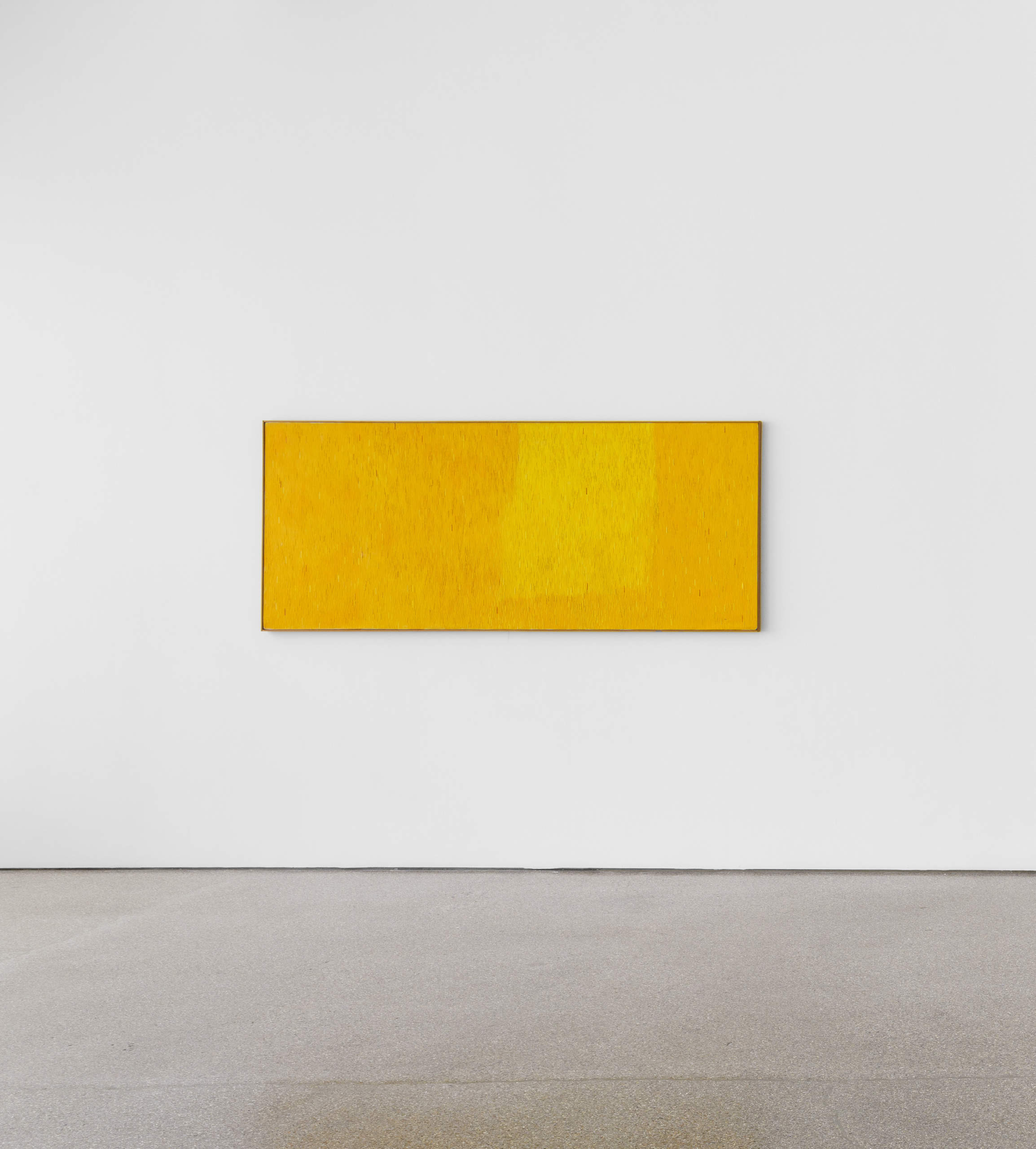
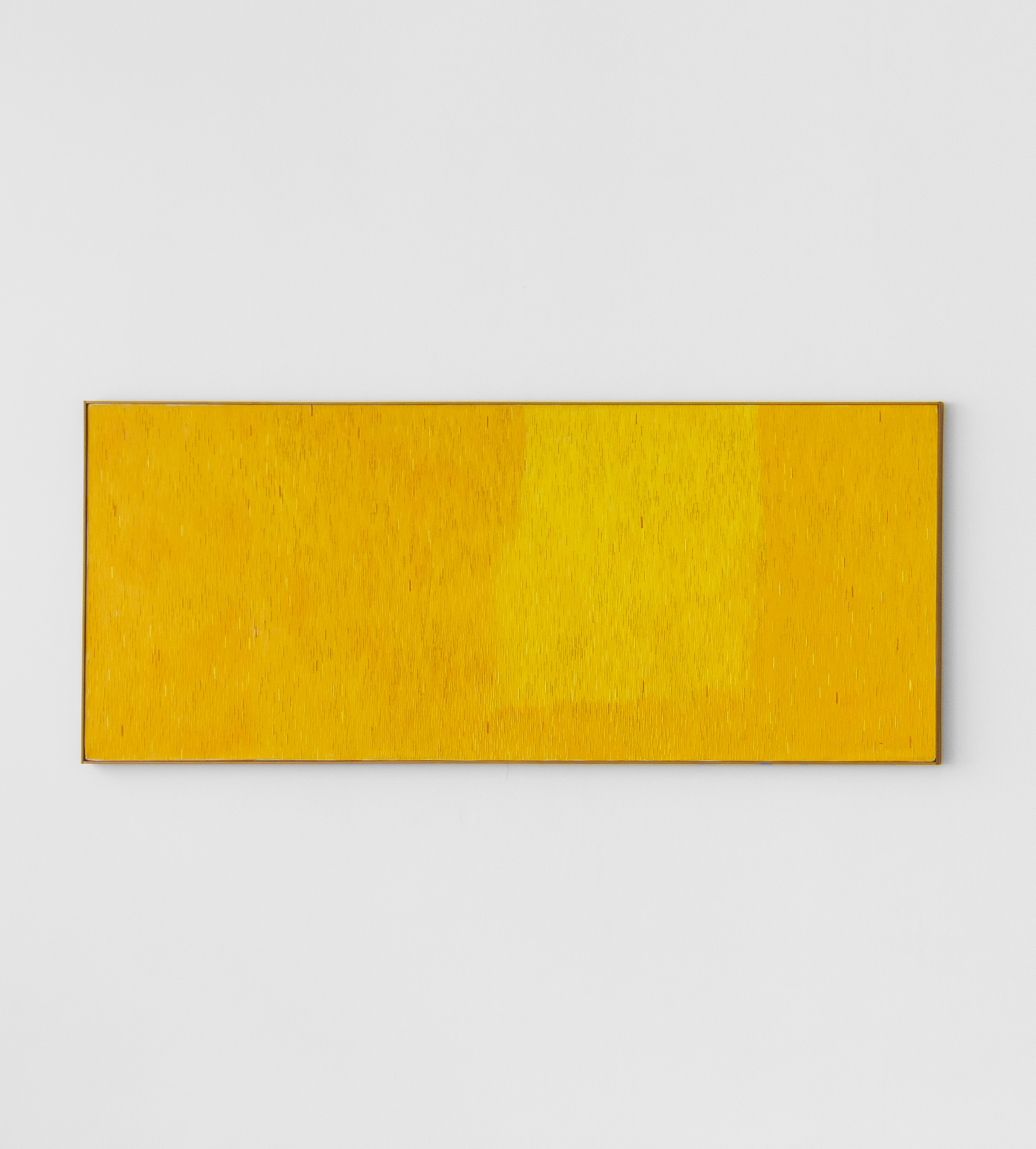
Mullican’s interest in indigenous and non-Western understandings of the cosmos, and spirituality, led him to study Native American and Pacific Islander art, which also contributed to the style, and occasionally the iconography, of his paintings and sculptures. He developed a technique in which he used a palette knife to apply short lines of paint, which he could build up over the surface of the canvas to conjure a shimmering field of colour. In the 1950s, Mullican was one of the most important proponents of West Coast abstraction, pursuing a uniquely expansive vision that paved the way for younger artists as Robert Irwin or Larry Bell.
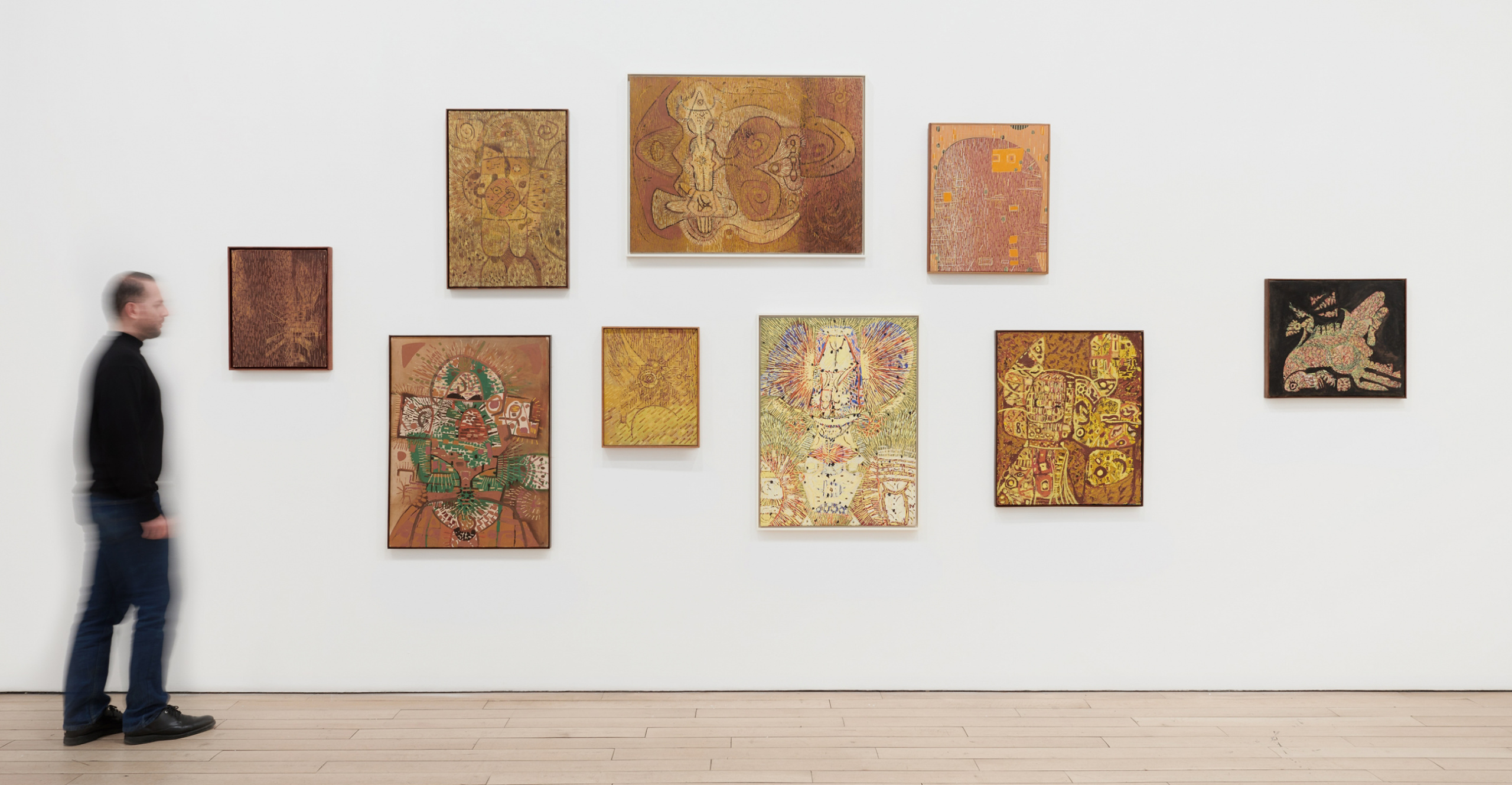
Installation view, Lee Mullican: Cosmic Theater, James Cohan Gallery, NY, 2019
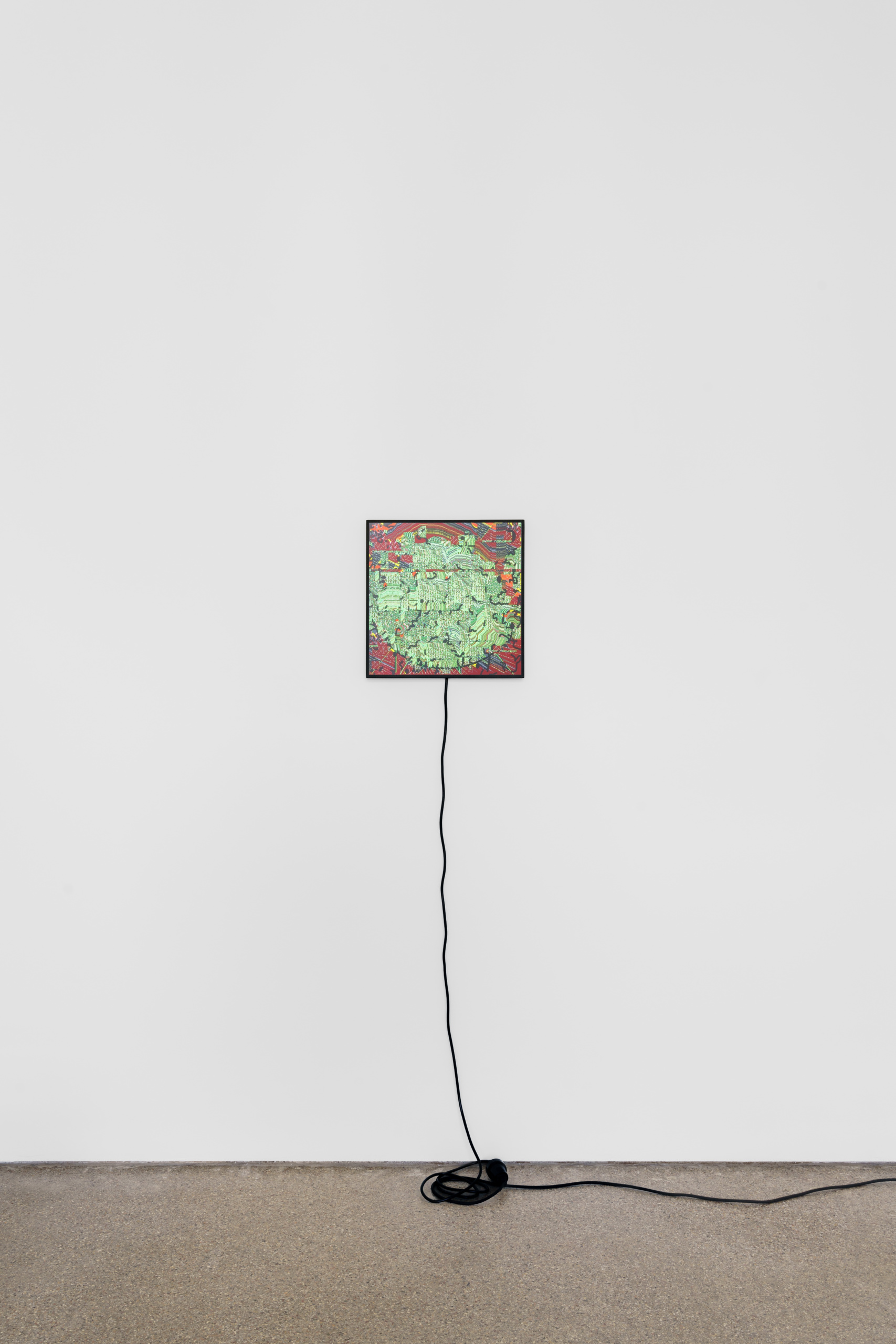

Throughout his life, Mullican never stopped experimenting or evolving. While working as a professor at UCLA, in the 1980s he was given access to the university’s new bank of computers. The computer drawings, one example of which is included in this exhibition, demonstrate Mullican’s willingness to cast himself into the unknown, and to embrace the technological future as well as the ancient past. Most importantly, they reveal how an artist of Mullican’s stature and seniority could still welcome playful experimentation into his art, opening up new paths into image-making which would resonate even decades after his lifetime.
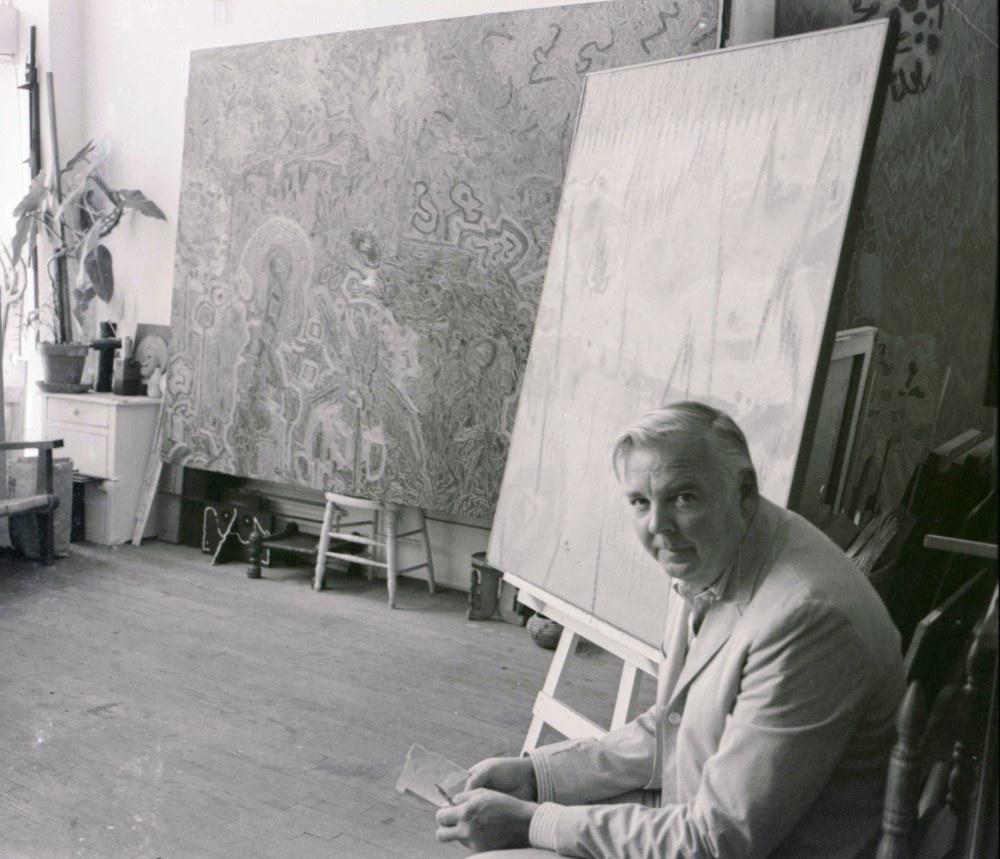
In the studio. Courtesy Hurtado Mullican Archive
We thank Hurtado Mullican Archive for their kind collaboration on the group show Once The Block Is Carved, There Will Be Names.